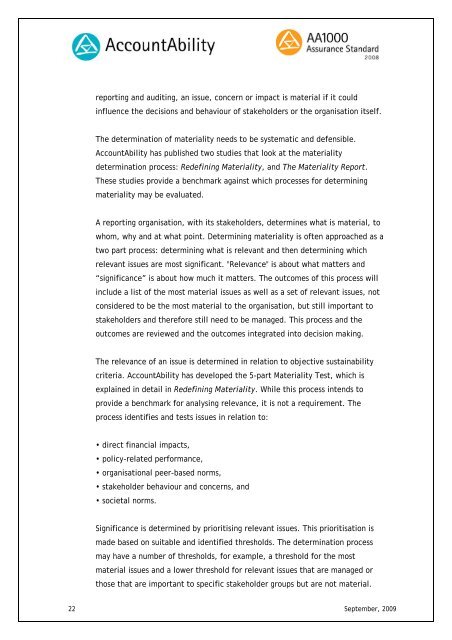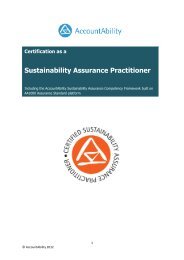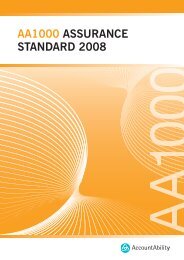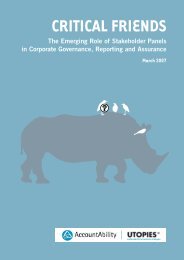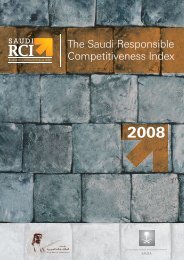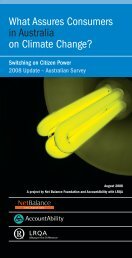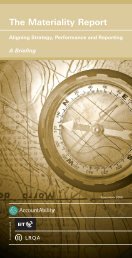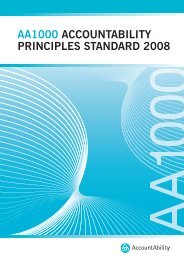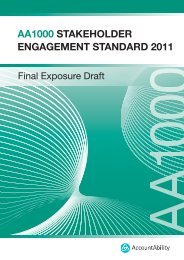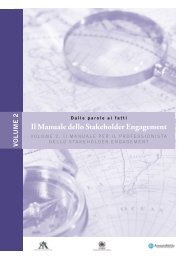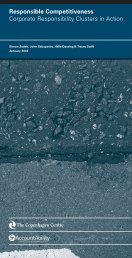Guidance for AA1000AS (2008) Assurance Providers - AccountAbility
Guidance for AA1000AS (2008) Assurance Providers - AccountAbility
Guidance for AA1000AS (2008) Assurance Providers - AccountAbility
Create successful ePaper yourself
Turn your PDF publications into a flip-book with our unique Google optimized e-Paper software.
eporting and auditing, an issue, concern or impact is material if it couldinfluence the decisions and behaviour of stakeholders or the organisation itself.The determination of materiality needs to be systematic and defensible.<strong>AccountAbility</strong> has published two studies that look at the materialitydetermination process: Redefining Materiality, and The Materiality Report.These studies provide a benchmark against which processes <strong>for</strong> determiningmateriality may be evaluated.A reporting organisation, with its stakeholders, determines what is material, towhom, why and at what point. Determining materiality is often approached as atwo part process: determining what is relevant and then determining whichrelevant issues are most significant. "Relevance" is about what matters and“significance” is about how much it matters. The outcomes of this process willinclude a list of the most material issues as well as a set of relevant issues, notconsidered to be the most material to the organisation, but still important tostakeholders and there<strong>for</strong>e still need to be managed. This process and theoutcomes are reviewed and the outcomes integrated into decision making.The relevance of an issue is determined in relation to objective sustainabilitycriteria. <strong>AccountAbility</strong> has developed the 5-part Materiality Test, which isexplained in detail in Redefining Materiality. While this process intends toprovide a benchmark <strong>for</strong> analysing relevance, it is not a requirement. Theprocess identifies and tests issues in relation to:• direct financial impacts,• policy-related per<strong>for</strong>mance,• organisational peer-based norms,• stakeholder behaviour and concerns, and• societal norms.Significance is determined by prioritising relevant issues. This prioritisation ismade based on suitable and identified thresholds. The determination processmay have a number of thresholds, <strong>for</strong> example, a threshold <strong>for</strong> the mostmaterial issues and a lower threshold <strong>for</strong> relevant issues that are managed orthose that are important to specific stakeholder groups but are not material.22 September, 2009


